Faculty Development Council Grant Program Awardees
The Faculty Development Council Grant Program provides funding to facilitate research, scholarly and creative productivity to increase awardee competitiveness for extramural grant funding. These are project-based grants for up to $5,000, and can be made to faculty in any discipline, as long as they are in continuous appointments. Although the Office of Research and Economic Development took over management of the program in 2017-18, this program is one of the longest-standing sources of internal funding on campus, with records dating to 1986.
2024 Awardees

Dr. Melike Dizbay-Onat
Assistant Professor, William B. Burnsed Jr. Mechanical, Aerospace, & Biomedical Engineering
Department
College of Engineering
"Innovative Adsorbent Materials for Enhanced Arsenic Removal"
Abstract: Arsenic contamination in drinking water poses serious health risks, including cancer and neurological disorders. Despite various technological advancements, there's a need for effective methods for arsenic removal. The proposed project aims to develop innovative adsorbent materials for enhanced arsenic removal from drinking water. By leveraging the unique properties of activated carbon fiber cloth (ACFC) and magnetic nanoparticles, this study seeks to design highly efficient solutions for arsenic removal. This project addresses this need by exploring the synergistic effects of ACFCs and magnetic nanoparticles in arsenic adsorption. The project holds significant potential for improving public health, advancing materials science, and addressing environmental challenges. This project holds the potential to strengthen the PI's external grant applications including NSF-CAREER.
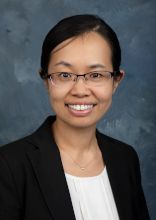
Dr. Na Gong
Associate Professor, Department of Electrical & Computer Engineering
College of Engineering
"AI-Enabled Real-Time Emotion Recognition on Wearable Devices"
Abstract: Detecting human emotions in real time using Artificial Intelligence (AI), also referred to as emotional AI, has great potential to impact a variety of applications such as education, marketing, human-robot interaction, healthcare, and mental health monitoring. However, existing developments on emotional AI focus on cloud-based AI algorithms, which need long processing time and cannot support real-time emotion classification. In this project, we will study the software-hardware co-design techniques to enable real-time emotional classification locally in wearable devices. Specifically, we will design and optimize AI algorithms to recognize the users’ emotions with reduced resources requirement and further develop, prototype, and test a custom wearable device for real-time decision making. Such AI-enabled real-time emotional awareness of users will open a door to connect people’s psychological feeling and computing system’s operations.
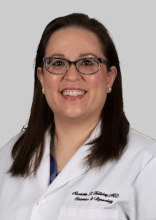
Dr. Nicolette Holliday
Assistant Professor, Department of Obstetrics & Gynecology
Frederick P. Whiddon College of Medicine
"Can the compliance with postpartum 2 hr glucose tolerance tests be improved with home administration in comparison to office administration of glucola?"
Abstract: Patients diagnosed with gestational diabetes mellitus (GDM) should be given a glucose tolerance test (GTT) between 4-12 weeks postpartum (American Diabetes Association, 2017). GDM could signify preexisting, undiagnosed pre-diabetes and type 2 diabetes. Approximately 8.5 million American adults have undiagnosed diabetes, with women making up over half of the total (Centers for Disease Control and Prevention, 2022). The standard practice is for patients to complete the GTT while in the outpatient clinical setting, which takes approximately 2 hours. There is a lack of compliance both within the USA Health System and worldwide with this screening due to an assortment of factors including transportation, childcare, and breastfeeding concerns - along with balancing other time commitments. An at-home GTT option could improve patient compliance with this necessary screening.
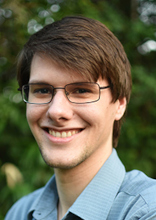
Dr. Dakota Lindsey
Assistant Professor, Department of Psychology
College of Arts & Sciences
"Blinded by the Self: How Narcissistic Traits Distort Eyewitness Confidence in Police Lineups"
Abstract: The proposed research addresses whether personality characteristics – specifically narcissistic personality traits – affect the integrity of eyewitness testimony. Eyewitness testimony is a cornerstone of the United States justice system, and it relies on witness having well-calibrated accuracy and confidence levels. Narcissists, however, are notoriously overconfident in their abilities, and may also overestimate their ability to remember a suspect. We will conduct a mock eyewitness memory experiment in which participants will be asked to watch a video of a crime and then identify the suspects of this crime in a photograph lineup. We will measure narcissistic personality traits and assess whether they are related to the accuracy of suspect identification. The results of this study have important implications. Confidence is used as a proxy for accuracy in eyewitness settings, so testimony from narcissistic witnesses may be more likely to lead to wrongful convictions of innocent people.
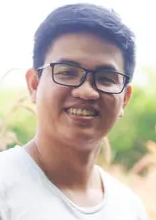
Dr. Tuan Tran
Assistant Professor, Department of Biology
College of Arts & Sciences
"Understanding The Biofilm Establishment and Systemic Infection of Bacterial Wilt Pathogens Using Microfluidic Technologies"
Abstract: Ralstonia solanacearum species complex (Rs) is a group of bacterial pathogens that cause bacterial wilt disease on more than 250 plant species, including many economically important crops such as tomato, potato, banana, tobacco, etc. The disease is a serious threat to the US tomato, tobacco, and potato industry. Rs colonizes plant xylem vessels that transport water and block the flow of xylem sap by its biofilm (bacterial cells and extracellular material), resulting in wilt symptoms. However, the establishment of biofilm under the xylem flow is poorly understood due to the technical limitation of imaging of the xylem environment. In addition, existing systems to study biofilm ex vivo do not reflect the biology of the plant xylem. Here, we leverage our strength in microbial pathogenesis and synthetic biology to build and implement a microfluidic system that resemble conditions of xylem vessels to study the biofilm behavior of this bacterial pathogen.

Dr. Kelly Urban
Associate Professor, Department of History
College of Arts & Sciences
"Research for Biomedical Vanguard"
Abstract: I am seeking travel funding for archival research for my second monograph, Biomedical Vanguard: The Forging of an Alternative Health Care Model in Cuba, 1959–90. This book will explore the construction of Cuba’s renowned healthcare sector, which was built after the 1959 Revolution. It will analyze local, transnational, and international processes. It will contribute to Cuban studies by examining the history of biopolitics under socialism, add to a new wave of Cold War scholarship that centers the Global South, and offer practical lessons to the global health community. In this early stage of research, I will explore (1) the records of physicians, medical ethnographers, and political activists at the Cuban Heritage Collection and (2) the reports of Cuban representatives and international health actors at the Pan American Health Organization archives. This research will make me more competitive for larger external grants to fund a final stage of (international) research.
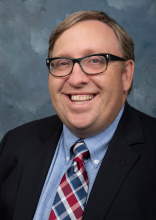
Dr. Sean Walker
Associate Professor, Systems Engineering Program
College of Engineering
"Repurposing EV Batteries for Improved Economic Impacts"
Abstract: As electric vehicle (EV) sales continue to increase across the United States, and globally, it has become essential to make the use of metals in EV batteries more sustainable. One method for accomplishing this is to repurpose EV batteries after their initial use inside a vehicle by using them for stationary energy storage for homes and communities. In addition to the environmental benefits of repurposing used EV batteries, there are economic benefits. With the proliferation of EVs, there is an expected increase in the cost of the metals that act as anodes and cathodes in the batteries. Reuse of these batteries for supporting renewable power generation in homes, communities or industries reduces the demand for these raw materials. In this project, the PI proposes to examine the performance of used EV batteries as energy storage for solar power in a suburban Gulf Coast setting using Technoeconomic Analysis (TEA).
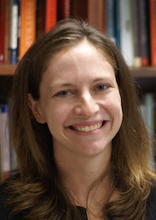
Dr. Claire Cage
Associate Professor, Department of History
College of Arts & Sciences
"Animals, Empire, and Zoos in Modern Paris"
Abstract: This project examines the history of the public display of animals - and humans - in zoos in modern Paris. The world’s first public zoo was founded in Paris in 1793 as the menagerie at the Muséum national d’histoire naturelle at the Jardin des Plantes. A second Parisian zoo opened in 1860 at the Jardin d’Acclimatation. These public zoos were a site of empire, the production of scientific knowledge, entertainment, and captivity. Spanning the period from the French Revolution to the early twentieth century, my project traces the dramatic trajectory of these institutions that culminated in the exhibition of indigenous peoples of the Americas, Africa, and Asia alongside zoo animals. With the assistance of funding through the FDCGP, I will be able to conduct essential research in French archives and libraries this summer for four weeks to serve as the foundation for a book manuscript.
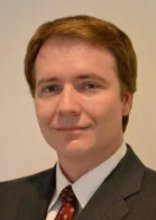
Dr. George Clark
Assistant Professor, Department of Computer Science
School of Computing
"A Comparison of Invasive vs. Non-Invasive Side-Channel Analysis Attacks"
Abstract: Cyber-physical systems are susceptible to side-channel analysis (SCA) attacks during the cryptosystem process. Using Differential Power Analysis (DPA), Electromagnetic (EM) radiation, and other SCA attacks, adversaries can correlate physical elements such as power usage and current flow to determine the bit pattern of a secret crypto key during the decryption process. Previous research at the University of South Alabama has examined SCA vulnerabilities and their defense by analyzing EM radiation leakage of an integrated circuit (IC) with success. This research will go further by removing the physical cover of a microprocessor to gain access to the integrated circuits on its silicon wafer. The removal of this barrier will lead to improved analysis and open new areas of research such as fault injection attacks of an IC via laser. The project will require purchasing a high-power laboratory microscope.

Dr. Gabriel de Oliveira
Assistant Professor, Department of Earth Sciences
College of Arts & Sciences
"Investigation of post-fire carbon dynamics and water-use efficiency in Amazonian forests"
Abstract: The Amazon region has the largest rainforest in the world; however, anthropogenic pressure and combined land-use and land-cover changes (LULCC) have led to large-scale forest losses and fires. For the purposes of this proposal, I will focus on the impacts of two important processes operating at different spatial and temporal scales in Amazonia: (i) analysis of the impacts of fire on canopy structure and (ii) identification of the susceptibility, and the impacts of fire and post-fire on carbon dynamics and water-use efficiency. The proposed research can play an important role in order to improve data analysis and theory about Amazon fires, serving as a basis for earth systems models for forecasting forest-atmosphere interactions, and consequently, addressing the future link between tropical forest fires and climate change.

Dr. Lu Ding
Assistant Professor, Department of Counseling and Instructional Sciences
College of Education and Professional Studies
"Tutoring Style Videos for Teaching Debugging"
Abstract: This project is to investigate the effects of an innovative video-based instruction approach – tutoring videos – on teaching students to debug. Debugging is a core part of programming, yet frustrating for all programmers. Not many new programmers were specifically taught how to debug, but those who did at the early stage of learning programming were more likely to make fewer errors than those who did not. Bugs due to sloppiness or ignorance can be easily taught by didactic instruction, but bugs caused by misconceptions require much more effort to correct. Tutoring videos have been used to tackle misconceptions in some challenging topics in natural sciences, but have never been tested for teaching programming. We will use a quasi-experimental design in an introductory programming course to compare students’ learning after watching tutoring and traditional videos.
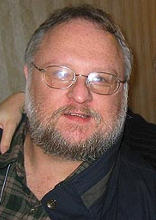
Dr. John McCreadie
Professor, Department of Biology
College of Arts & Sciences
"Coastal Streams of 'America's Amazon'"
Abstract: In the crowded theater of global issues biodiversity has moved to center stage. The recent and astonishing global decline in insect biodiversity is a stark reminder of how significant species loss has become. High ratios of stream insect biodiversity to low surface area of streambeds results in ecosystems especially vulnerable to global changes. Unfortunately this translates into one of the most endangered habitats on the planet. The goal of my study is to determine how insect biodiversity in the coastal streams of Alabama have fared under the shadow of climate change. Streams sampled in the fall of 2007 will be re-sampled in the fall of 2022 and 2023, which translates into tens to hundreds of insect generations. These streams are of particular interest as they all drain into what E.O. Wilson referred to as ‘America’s Amazon’ - the Mobile Tensaw Delta. This proposal is to fund the 2023 sampling season.
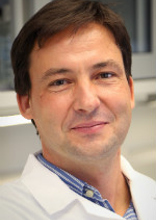
Dr. Wito Richter
Professor, Department of
College of Medicine
"PDE4D expression in human metabolic cells and tissues"
Abstract: Obesity continues its global spread, exemplifying an urgent need to develop new therapies. Type 4 phosphodiesterases (PDE4s) comprise a family of four enzymes (PDE4A to D) that hydrolyze the second messenger cAMP. We have identified a most promising metabolic phenotype in mice genetically deficient in one PDE4 subtype, PDE4D. PDE4D-knock-out mice are leaner than their wildtype littermates, have reduced body- and fat-pad weights, and are protected from aging-induced increases in blood glucose and cholesterol levels. Thus, PDE4D inactivation may protect from obesity, Type-II diabetes and atherosclerosis in humans. Critical to obtaining extramural grant support for further studies are data confirming that these beneficial effects of PDE4D ablation are not unique to mice but are conserved in humans. As a critical first step, we propose to confirm that PDE4D is expressed in relevant metabolic cells and tissues in humans, thus underlining the potential clinical relevance of our studies in mice.

Dr. Hans Schanz
Assistant Professor, Department of Chemistry
College of Arts & Sciences
"Environmentally Advantageous Halogenations with a Non-Toxic Bromide/Air System"
Abstract: This project proposes the use of oxygen in air as a reagent to drive halogenation reactions, in particular bromination reactions, from non-toxic starting materials such as alkali metal halides (instead of the highly toxic and corrosive halogens) and an environmentally friendly catalytic system based on TEMPO. The novelty lies in the attempt to generate large amounts of halogen via air oxidation, but using them in small concentrations. Our targeted test reactions are the quantitative bromination of phenol, ethanol and butanal. In traditional synthesis, these reactions are often conducted with pure halogen under strict safety protocols. The traditional reactions also generate large amounts of side products, as well as hazardous acid by-products. We propose to develop a synthetic system that mitigates these environmental hazards and safety hazards while simultaneously making these processes more economical than today’s standard by virtually eliminating side and byproducts.

Dr. Gabriel de Oliveira
Assistant Professor, Department of Earth Sciences
College of Arts & Sciences
"Assessing alterations in water and carbon fluxes with forest fires across the Amazon region"
Abstract: The Amazon region has the largest rainforest in the world; however, the anthropogenic pressure and combined land-use and land-cover changes (LULCC) have led to large-scale forest losses and fires. For the purposes of this proposal, I will focus on the impacts of two important processes operating at different spatial and temporal scales in Amazonia: (i) analysis of the impacts of fire on structure and dynamics and (ii) identification of the susceptibility, and the climatic impacts of fire and post-fire dynamics on water and carbon fluxes in the region. The proposed research can play an important role in order to improve data analysis and theory about Amazon fires, serving as a basis for earth systems models for forecasting forest-atmosphere interactions, and consequently, addressing the future link between tropical forest fires and climate change.
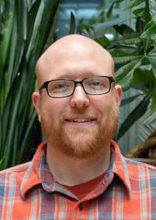
Dr. Benjamin Linzmeier
Assistant Professor, Department of Earth Sciences
College of Arts & Sciences
"Calibrating microanalysis of calcium isotopes in carbonates"
Abstract: Our understanding of ancient environmental conditions like temperature or pH derives from measurement of physical or chemical proxies that record these conditions. Accurate measurement and interpretation of proxies hinges on isolating primary materials from those recording other conditions. Smaller sample volumes can isolate primary proxy records. Secondary ion mass spectrometry (SIMS) is a method that samples extremely small volumes of material with high analytical precision. Accurate SIMS measurements rely on similarity in composition between standards and samples, so careful analysis of standard materials by multiple methods is necessary. Here I propose to measure the calcium isotope ratio (d44/40Ca) of a series of carbonate minerals to develop SIMS measurement capabilities. Developing the capability to measure d44/40Ca on carbonate is particularly important for understanding ocean acidification and the consequences for shelled organisms.

Dr. Molly Miller
Research Assistant Professor, School of Marine and Environmental Sciences
College of Arts & Science
"Examination of Toxigenic Freshwater Cyanobacteria in Coastal Waters of the
Northern Gulf of Mexico"
Abstract: Historically considered a freshwater problem, toxin-producing cyanobacteria and their associated harmful algal blooms (cHABs ) have not been of concern to coastal areas, including the northern Gulf of Mexico (nGOM). However, that has changed following the first documented toxin producing bloom of these organisms in local waters. Preliminary work utilizing traditional and advanced molecular strategies to obtain species ID and identify genes associated with toxin production have proved challenging in locally collected environmental samples. Hence, the objectives of this work are to develop an innovative method to identify cyanobacterial species in coastal samples and characterize their capacity for cyanotoxin production There is no current policy or guidance for safe consumption or exposure of freshwater cyanotoxins in marine species along the nGOM, so cHAB toxin characterization will greatly improve our understanding of risk associated with these events.
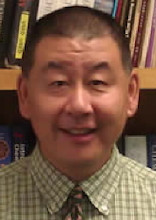
Dr. Larry Yet
Associate Professor, Department of Chemistry
College of Arts & Sciences
"Synthesis of Mpro Inhibitors of SARS-CoV-2"
Abstract: A highly pathogenic human coronavirus (CoV) was reported in Wuhan, China. The coronavirus pandemic known as COVID-19 is caused by severe acute respiratory syndrome coronavirus 2 (SARS-CoV-2), a mutated strain of SARS-CoV, a single positive-stranded RNA virus of 28 to 30 kb size, which contains a genomic RNA which encodes a non-structural replicate polyprotein and structural proteins such as the two proteases 3CLpro, also called Mpro and PLpro, playing key roles in polyprotein processing from the genomic RNA into the structural and nonstructural protein components vital for the replication and packaging of new generation of viruses. Mpro inhibitors are reported in the literature, which reveal reasonable activity, however there are no SARS-CoV- 2 drugs on the market. We are interested in inhibition of Mpro as a very promising target for the development of broad-spectrum anti-SARS and anti-MERS therapeutic agents due to its highly conversed three-dimensional structure among the various coronaviruses.

Dr. Prakash Duraisamy
Assistant Professor, Department of Computer Science
School of Computing
"360-Degree Classroom Engagement Using Computer Vision and Deep Learning Techniques"
Abstract: Observing classrooms to determine student engagement is a labor-intensive task. This is especially true in large classrooms where the professor’s eyes might not make it past the first couple of rows of students. Advances in computer vision have led to computer-based systems to code facial expressions, movement, and body language. The ability to code these factors suggests that systems that can through a mathematical analysis of digital video assess student engagement. While there have been a few studies that have attempted to develop such systems, the correlations with reported engagement have been inconsistent. More work is needed to develop a system that adequately captures the classroom. We want to develop a system that more tightly predicts student engagement. We wish to do this by providing sufficient camera coverage, so that facial gestures, body movement, and identification of what distracted students are attending to (personal devices) can be captured.
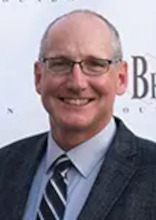
Dr. David Forbes
Professor, Department of Chemistry
College of Arts & Sciences
"Assembly of Photochromic Materials"
Abstract: Proposed is an innovated and streamlined route toward assembly of cyano functionalized naphthopyran precursors. Naphthopyrans have garnered considerable attention given their reversible and non-degrading photoisomerization properties as photochromic materials. The key metric when applying thermally and photochemically stable photometric materials is rate of optical transformation. High rates are ideal for optical switches whereas slower rates are generally reserved for systems involving optical data storage media. As naphthopyrans have been documented as the system of choice for imparting photochromic properties, methods in their assembly which are not tedious and do not require multistep processes/prefunctionalized starting materials are very attractive and would significantly advance the fundamental research in the area of organic photochromic materials. Success will provide the necessary preliminary data to be competitive for foundational/federal funds having as our long-term goal, the assembly and use of next generation organic photochromic materials.

Dr. Holly Peterson
Assistant Professor, Department of Political Science & Criminal Justice
College of Arts & Sciences
"Building Resilient Narratives for Vulnerable Populations"
Abstract: Policy Process literature has provided important lessons for policymakers, including how past policy can dissuade or embolden future public participation in civic life and the power of policy narratives to persuade and focus public attention. This project draws upon these lessons, integrating policy process theory with public hazards and public administration scholarship on public trust, experience of hazards, and governance, to develop lessons for policymakers of crafting narratives for vulnerable populations. Using both a telephone and online narrative survey experiment, which innovates on past narrative work, this project seeks to better understand what public narratives work for Alabamians most in need of hazards preparation and protection. This research pilots a survey tool that will be included in a National Science Foundation Career Grant in 2022.

Dr. Wito Richter
Assistant Professor, Department of Biochemistry
College of Medicine
"PDE4C – the missing piece to understanding PDE4 enzyme functions"
Abstract: Type 4 phosphodiesterases (PDE4s) comprise a group of four genes/subtypes, PDE4A to D, that hydrolyze the critical signaling molecule cAMP. Non-selective inhibitors of PDE4s produce numerous promising therapeutic benefits including memory- and cognition-enhancing, anti-neoplastic or anti-inflammatory effects, but also produce side effects, particularly nausea and emesis, that limit their clinical utility. Selective inactivation of individual PDE4 subtypes is a promising strategy to separate therapeutically beneficially from the side effects of non-selective PDE4 inhibitors. To this end, PDE4A, B and D, have been widely studied. Conversely, there is an almost complete lack of knowledge on the molecular, physiologic and pathologic roles of PDE4C. We propose to fill this knowledge gap by analyzing a novel strain of mice deficient in PDE4C. This pilot serves to generate critical preliminary data on the expression pattern, the molecular interactions and the physiologic functions of PDE4C in the mouse in support of subsequent extramural grant applications.
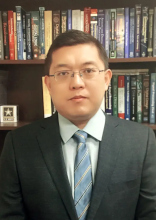
Dr. Jinhui Wang
Associate Professor, Department of Electrical and Computer Engineering
College of Engineering
"Mitigating Nonlinearities in Memristor-based AI Systems for High Performance"
Abstract: AI (Artificial Intelligence) technology is transforming the human daily life. Recently, memristor-based AI systems have drawn lots of attention to perform complex deep learning computation faster, more power-efficiency, and on a smaller footprint. Unfortunately, memristors are not reliable and their inherent nonlinearity characteristics cause the accuracy degradation in learning systems. In this project, 1) a new linear optimization (LO) algorithm is proposed to upgrade AI systems to heighten recognition accuracy, and 2) AI hardware is simulated and evaluated by two popular tools - NeuroSim and MNSIM. It is expected that this research will demonstrate the advantages of memristor-based AI hardware with high performance, contribute to avoid deviation between software and hardware in AI systems, and layout the foundation of a new and promising direction for both academic research and industrial development. Finally, the results from this project will significantly support Dr. Wang to pursue the external funding from the NSF and DoE.

Dr. Shenghua Wu
Assistant Professor, Department of Civil, Coastal, & Environmental Engineering
College of Engineering
"Evaluation of Inundation-Related Pavement Material Deterioration"
Abstract: Hurricane and storm surge have significant impacts on the roadway infrastructures in the Gulf Coast area, especially on the flood-prone roadways that are subject to single inundation or frequent inundation events. There exits in a gap in understanding the mechanism of inundation-related material deterioration. This project aims at evaluating three flood-prone asphalt roadways working with Alabama Department of Transportation (ALDOT) Southwest region with respect to data collection and field distress surveys that are used to identify inundation-related damage. Field cores drilled from the roadway will be characterized in the asphalt laboratory at the University of South Alabama. The preliminary results from this study will be used for identifying asphalt roadway damage mechanism due to inundation, seeking for external funds to broaden the scope of work, and establishing a flagship demonstrating a joint effort between local transportation agency and higher education institute in solving practical engineering problem.
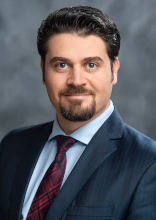
Dr. Aref Yadollahi
Assistant Professor, William B. Burnsed Jr. Department of Mechanical, Aeronautical,
& Biomedical Engineering
College of Engineering
"Development of a Fatigue-Life Predictive Model for Additively Manufactured Materials Using Intentionally-Seeded Porosity"
Abstract: Functional components fabricated via additive manufacturing (AM, aka 3D printing) are of wide interest for aerospace, biomedical, and other industrial fields. However, the fatigue behavior, and thus ‘trustworthiness’, of AM parts is still not well understood, thus delaying their widespread application in industries. The inadvertent process-induced defects result in metallic AM parts lacking certifiable fatigue performance and/or sufficient quality for engineering applications. Hence, the first step toward improving AM parts’ reliability is to understand and to be able to model the influences of AM process-induced defects on their fatigue behavior. The main objective of the proposed work is to generate preliminary experimental data for developing external proposals to address the issue of qualification and certification of AM parts for fatigue critical applications. The success of this project will enable developing a fatigue-life predictive model, specifically addressing the features of AM materials which cannot be captured using the existing fatigue models.
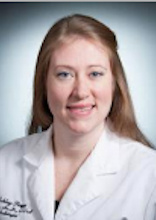
Dr. Ashley Flagge
Assistant Professor, Department of Speech Pathology and Audiology
Pat Capps Covey College of Allied Health Professions
"The Effect of Music Therapy on Respiration, Phonation, and Swallowing in Patients with Amyotrophic Lateral Sclerosis"
Abstract: Limited prior research has demonstrated beneficial effects of music therapy (MT) on respiration, phonation, and swallowing in adult patients with neurological impairments, including post-stroke patients and patients with Parkinson’s disease. To date, no study has explored the impact of music therapy on bulbar function (respiration, phonation, and swallowing) in patients with amyotrophic lateral sclerosis (ALS), despite the high occurrence rate of bulbar dysfunction in this patient cohort. The purpose of this study is to explore the effectiveness of a four-week music therapy protocol on measures of respiration, phonation, and swallowing in five patients with ALS. This pilot study will provide valuable preliminary data required for a future external grant submission.
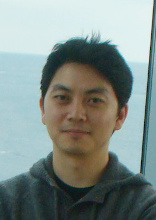
Dr. Hee Kim
Assistant Professor, Department of Mechanical Engineering
College of Engineering
"Villus-like Flexible Fin Array for Active Sensing and Power Management"
Abstract: The goal of this project is to initiate an emerging research field at the University of South Alabama by integrating direct energy conversion with soft electronics technology. The objective of this proposal is to equip a heat treatment system to establish a complete manufacturing route of polymer based thermoelectric membranes through spin coating and thermal curing processes. This work will be a stepping-stone to the development of self-powered human-interfaced wearable bioelectronics. This will lead to increasing competitiveness for extramural grant funding in research on wearable smart health monitoring systems. The first part of this project is design and simulation of a 3-D structured villus-like flexible fin array system. Second, self-standing thermoelectric polymer membranes will be fabricated through the combination of spin coating and multiple heat treatment processes. Metal electrodes for an electrical circuit will be patterned through aerosol jet printing technology on the processed membranes.

Dr. Padmamalini Thulasiraman
Associate Professor, Department of Biomedical Sciences
Pat Capps Covey College of Allied Health Professions
"Impact on the suppression of Proteinase Inhibitor 9 by hydroxytyrosol on mammary carcinoma cell death"
Abstract: By understanding how the immune system destroys cancer cells, novel immunotherapies can be identified for cancers. Proteinase Inhibitor 9 (PI-9) affects the ability of immune cells to kill cancer cells and due to this, it is associated with poor prognosis in carcinomas. PI-9 blocks the apoptotic activity of Granzyme B (GrB) released by cytotoxic cells and protects cells from death. Hydroxytyrosol (HT), a component in olive oil, strengthens the immune system. It is unknown whether HT can enhance apoptosis of cancer cells by regulating PI-9. Preliminary studies from my laboratory suggest that treatment with HT suppresses MCF-7 breast cancer cell growth, while causing a reduction in PI-9 protein levels and an increase in GrB. The proposed studies will 1) identify the optimal dose of HT to elicit changes in PI-9 and GrB levels, and 2) directly test whether treatment with HT increases sensitivity of cancer cells to targeted cell death.
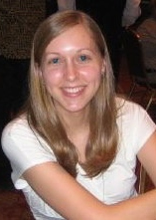
Dr. Lesley Gregoricka
Associate Professor, Department of Sociology, Anthropology, and Social Work
College of Arts and Sciences
"Investigating Mobility and Pastoralism Among Kerma-Period Communities in Sudan"
Abstract: The early African state society of Kush in what is now Sudan is typically characterized as a secondary state relative to Pharaonic Egypt to the north. Initially centered at the urban site of Kerma, the Kushite state flourished throughout the third and early second millennium BC until conquest by Egypt ushered in a period of colonial rule. Unlike Egypt, whose economy centered on agriculture, the people of Kush were thought to be pastoralists who exercised authority through the control of exchange networks and prestige goods. Even today, however, the extent to which pastoralism contributed to subsistence practices and long-distance exchange networks in the Nile Valley of Sudan is poorly understood. The proposed research is designed to investigate the mobility of rural people living in Kush during the Kerma period and in the subsequent phase of Egyptian colonialism through the analysis of strontium and oxygen isotopes from human dental enamel.
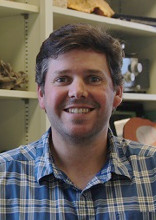
Dr. Will Jackson
Assistant Professor, Department of Earth Sciences
College of Arts and Sciences
"Exploring the development of the Rocky Mountains: Implications for plate tectonic models"
Abstract: In plate tectonics, the unifying theory of geology, mountain belts develop when the margins of two plates collide at a convergent plate boundary; resulting in the exhumation and uplift of the overriding plate. Examples include oceanic-continental plate collision such as the Andean Mountains and continent-continent plate collision such as the Himalayan Mountains. In contrast, the exhumation and uplift of the Rocky Mountains from Montana to New Mexico present an anomaly to plate tectonic predictions because the mountain range developed 700-1000 kilometers away from the plate margin. Jackson et al. (2016) and Jackson et al. (2018) provide field-based data (paleoseismites) from Montana that question established plate tectonic models for the Rocky Mountains. I propose to conduct further fieldwork in New Mexico to build upon this perspective and collect seed data for a NSF CAREER proposal. Results will advance our understanding of the Rocky Mountains and how fundamental plate tectonic processes operate.

Dr. Kelly Urban
Assistant Professor, Department of History
College of Arts and Sciences
"Politicosis: Tuberculosis, Public Health, and Politics in Cuba, 1925-1970"
Abstract: My book manuscript, Politicosis: Tuberculosis, Public Health, and Politics in Cuba, 1925-1970, explores - through the lens of tuberculosis control in Cuba - how citizenship, inequality and the politics of disease intersect. It offers one of the first social histories of disease of twentieth-century Cuba, and draws on a varied "medical archive," pairing quantitative health outcome data with qualitative sources on the socio-political context of TB control. Reversing current assumptions in medical humanities scholarship and Cuban historiography, my manuscript argues that the Cuban state pursued a serious public health project (the effort to eradicate TB) before 1959, that there were continuities in the lived experience of health across the 1959 revolution, and that health rights were won from the bottom up by ordinary citizens. Politicosis proves that advances in rights consciousness and innovative experiments in state health policy often arise in regions frequently considered peripheral to the development of public health.

Dr. Kendrea Garand
Assistant Professor, Department of Speech Pathology and Audiology
Pat Capps Covey College of Allied Health Professions
"Pulmonary Function and Its Influence on Speech and Swallowing Function in Patients with Motor Neuron Disease"
Abstract: Swallowing impairment (dysphagia) and speech impairment (dysarthria) resulting from bulbar dysfunction emerge in the majority of patients with motor neuron disease (MND). Pulmonary dysfunction likely exacerbates dysphagia and dysarthria in these patients due to progressive weakness of the upper aerodigestive tract over the course of the disease. To date, no study has examined the impact on pulmonary dysfunction on both speech and swallowing simultaneously despite the high occurrence rates of bulbar dysfunction in this patient cohort. The purpose of this study is to examine the impact of pulmonary function on motor speech and swallowing function in patients with MND compared to age- and sex-matched healthy controls. This seminal study will address the current gap in knowledge and will provide valuable preliminary data required for a future external grant submission.
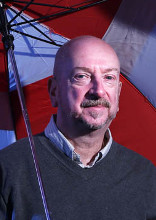
Dr. John Lanicci
Associate Professor, Department of Earth Sciences
College of Arts and Sciences
"Numerical Modeling of an Extreme Rainfall Event in a Future Climate"
Abstract: We propose to continue research on the potential impacts of climate change on extreme rainfall events along Florida's Atlantic coast. Using conventional observations and computer simulation, we examined the structure and evolution of a coastal storm that affected the Kennedy Space Center complex in October 2011. To study how this storm might behave in a warmer climate, we performed an integration of global climate model projections into computer simulations of the same storm and performed a preliminary comparison to those in the present climate. Initial results show that average storm rainfall increases in the future climate simulations compared to present-day climate, with the greatest average rainfall occurring in the moderate warming scenario, not the extreme scenario. By analyzing atmospheric structures in these simulations, we hope to gain insights that can be shared with engineers, managers, and planners facing the challenges of building resilient structures and systems for a future climate.
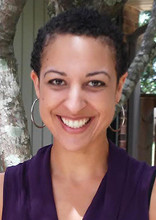
Dr. Krista Mehari
Assistant Professor, Department of Psychology
College of Arts and Sciences
"Life and Stress During Pregnancy"
Abstract: The goal of this project is to examine the role of contextual stressors in the health of pregnant women. Very little is known about the extent to which these risk factors (also called social determinants of health) are associated with women’s health during pregnancy and pregnancy outcomes (e.g., preeclampsia, gestational age). Understanding these relations as well as potential mechanisms of change is a vital first step to develop interventions that will promote maternal and fetal health. This study represents a collaboration between faculty members in the USA Department of Psychology and the Center for Women’s Health. Women who are receiving prenatal care in the high- and low-risk pregnancy clinics and who agree to participate will complete a survey, and their medical charts will be reviewed. Data will be used to apply for an intervention development grant application focused on mitigating the impact of contextual stress on pregnant women.
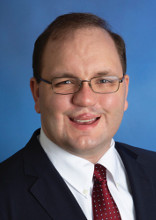
Dr. Gregory Poole
Associate Professor, Department of Mechanical Engineering
College of Engineering
"Additive Manufacturing of Flame Retardant Polymers Using Stereolithography"
Abstract: Additive manufacturing (aka AM/3D printing) has received immense attention due to its potential for improvements in product performance, decreased development times, and reduced costs. Although there’s been some studies on plasticizer additives in AM techniques, work on incorporation of flame retardants (FRs) in AM technologies are almost non-existent. A project is proposed to investigate incorporation of commonly-used FRs into polymeric components produced using the stereolithography method, as well as study the potential of ionic liquids as FRs. Preliminary studies will evaluate the solubility of candidate FRs in commercial acrylic resin, as determined by NMR and mass spectroscopy. After specimen printing, flame mitigation will be evaluated using thermogravimetric analysis (TGA), with degradation in inert atmosphere used as a baseline. To investigate possible plasticization effects, flexural modulus will be measured using the 3-point bend test. This will be coupled with differential scanning calorimetry (DSC) experiments to determine the glass transition temperature.

Dr. Dania Rishiq
Assistant Professor, Department of Speech Pathology and Audiology
Pat Capps Covey College of Allied Health Professions
"Masking Level Difference with Digits (MLDD) Test in Children"
Abstract:
The Masking Level Difference with Digits (MLDD) is a new test developed by Mayo Clinic to address the need for a speech-in-noise test that is linguistically primitive. The test rationale is that digits are overlearned speech stimuli and thus may require minimal linguistic processing. The test also measures the binaural release from masking effect – an ability that may diminish with central auditory nervous system (CANS) dysfunction. The anticipated clinical benefits for the test are numerous including evaluating pediatric patients with CANS dysfunction [e.g. patients with Auditory Processing Disorders (APD), and auditory neuropathy]. However, the clinical administration of the test has been limited due to the lack of pediatric test norms. Much remains unknown regarding the developmental time course of the MLDD performance in children, and how age influence test performance. Thus, the goal of this study is to evaluate age effects on test performance, and to establish pediatric test norms.

Dr. Steven Schultze
Assistant Professor, Department of Earth Sciences
College of Arts and Sciences
"In-grove Frost Warning System"
Abstract: Frost damage and dangerously cold temperatures have been one of the few factors limiting the growth of the Gulf Coast citrus industry. Frost events can cause heavy damage to a fruiting tree, particularly after flower bloom. This proposal seeks support for the development of a prototype frost warning system that would sit within a grove of fruit trees in the central Gulf Coast region. By working in conjunction with Auburn University’s Gulf Coast Research and Extension Center, the PI will develop a system that uses common instruments used in the field of agricultural technology to inform a grower when potentially damaging temperatures are occurring in their grove, rather than trusting a third party site or application (such as Accuweather) to use a generalized air temperature reading. If successful, such a system could save growers millions of dollars while also contributing to the current literature on frost damage to crops.

Dr. Shenghua Wu
Assistant Professor, Department of Civil, Coastal, and Environmental Engineering
College of Engineering
"Evaluation of Bio-based Graphene Reinforced Asphalt Mixtures"
Abstract: Collaborating with US Forest Service, this study is to evaluate the effectiveness and applicability of a newly developed bio-based graphene that can used in asphalt pavement. This new type of graphene is made from kraft lignin which is natural abundance in all plants. Currently none of research is conducted on whether this bio-based graphene would be compatible with asphalt pavement and potentially improve pavement performance. As such, a series of laboratory experiments will be conducted at asphalt lab at USA to characterize the material properties of bio-based graphene reinforced asphalt mixtures. Different asphalt types, graphene types and dosages, and asphalt mixtures used in Mobile will be investigated. Also, the cost benefit and environmental impacts will be analyzed. Upon completion of this project, best practice of use of bio-based graphene reinforced asphalt mixtures will be provided, which will be beneficial for asphalt industry practitioner, asphalt paving contractor and transportation agencies.


